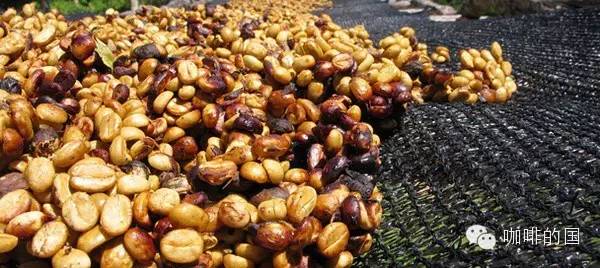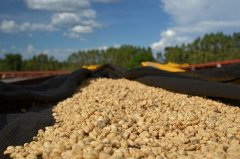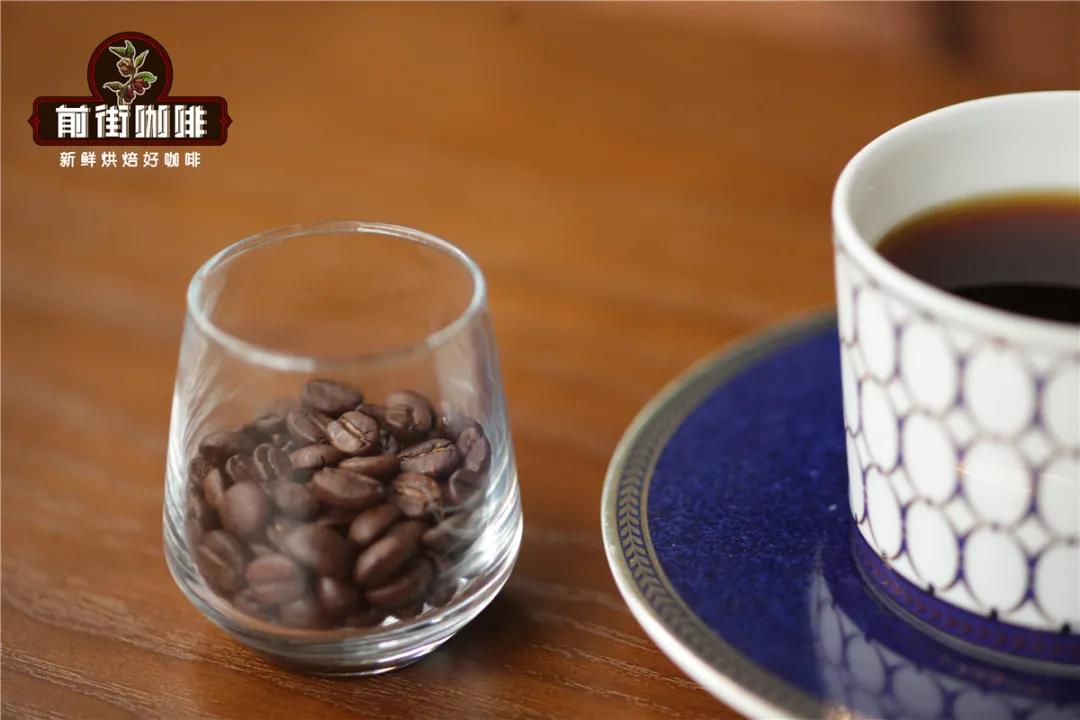Coffee treatment what is Honey treatment Niagara Jim Molina Manor Honey treatment Red bourbon Fine products
The so-called honey treatment (Miel Process in Spanish) refers to the process of making raw beans by sun-drying with mucous membranes. After the outer pulp of the coffee bean is removed, there will be a layer of sticky jelly. The traditional method of washing is to wash it off with clean water, but because of the limitation of water resources in some high-altitude areas, there is this way of direct drying.
The honey treatment process is vulnerable to pollution and mildew, so it needs to be closely watched throughout the process, constantly turning, and speeding up drying, so as to avoid bad fermentation flavor. Its advantage is that it can best preserve the original sweet flavor of coffee ripe fruit, making the coffee show elegant black sugar flavor and drupe flavor, while the berry flavor also supports the basic aroma of red wine, which is considered to be a very elegant product. The popularity of honey-treated coffee beans is largely due to their sweet and thick characteristics, which are very suitable for Espresso production in cafes. In recent years, more and more coffee beans are called "Miel Process", and they have also become a favorite material for international coffee contestants.
Honey treatment as an advanced coffee processing method, there is no lack of practitioners in Yunnan. But not everywhere is suitable for the production of honey beans, coffee producing areas are mostly wet and rainy, this process is very easy to make coffee beans fermented mildew, mildew taste. Because in some places, while honey treatment is used, it is also cultivated with microbial natural nutrients.
Nicaragua is mainly divided into four major producing areas, namely, Bosnia and Herzegovina Sub-region (Segovias), Madaguelba / Henodeka region (Matagalpa/Jinotega), Borgo region (Boaco) and Pacific Coast region (Pacific). The highest planting height in Bosnia and Herzegovina is about 1500-2000, and the coffee produced is the highest SHG (Strictly High Grown).
Planted with volcanic ash and shaded trees, it produces high-quality Nicaraguan coffee with a mediocre, soft and slightly sour flavor. Nicaraguan coffee is the largest of all coffee beans, while MADRIZ (Madriz) is located in the mountains of northern Nicaragua, adjacent to Nueva Segovia, Jinotega and Esteli, the area is quiet and elegant, with the famous Somoto Canyon, and the local residents are mainly indigenous peoples of various tribes and people who mixed with the Spaniards in the colonial period (mostly Chorotegas). The local production of coffee, the development of arts and crafts processing trade, as well as traditional delicacies. Madriz is characterized by a cool climate, its small town looks simple, but features beautiful roofs and special tile white buildings, there are also many coffee plantations, and the mountains are covered with verdant pine and oak forests.
Although the area has not yet been widely explored by tourists, Madriz has a variety of interesting attractions, including special geological structures, rock paintings, ancient colonial sites, and high-quality handicrafts developed from different materials. Madriz's capital is in the small city of Somoto. Somoto has an active ancient parish church located in the center of the city (the church still has antiquities and architectural structures preserved from the colonial era since 1661).
Miel, in Spanish, means "honey". The honey treatment method (Miel Process) refers to the process of turning coffee into raw beans, which in the end makes coffee unforgettable like sweet honey. Honey treatment, originally known as "Pulp Natural", means to dry the mucous membrane on a daily basis. After the outer skin and flesh of the coffee fruit is removed, there will be a sticky and thick substance on the raw bean, which is different from the washing method to wash it off with clean water, so it is not easy to dry during the day. Therefore, it is necessary to closely control and turn over the whole process to avoid producing bad fermentation flavor.
Jim Molina honey treatment
Country: Nicaragua
Production area: La Sabana,Madriz
Manor: Jaime Molina Jim Molina
Landowner: Montecristo
Processing plant: Jaime Jose Molina Fiallos
Altitude: 1400-1450m
Harvest time: December-March of the following year
Treatment method: honey treatment
Variety: red bourbon
Flavor description: chocolate, red fruit, juicy, balanced medium mellow thickness

Important Notice :
前街咖啡 FrontStreet Coffee has moved to new addredd:
FrontStreet Coffee Address: 315,Donghua East Road,GuangZhou
Tel:020 38364473
- Prev

The only kind of coffee drunk by the royal family in Europe-- Elephant Bean Coffee, the producing area of Elephant Bean Coffee
All kinds of coffee beans have different tastes, but they are almost the same size, but the elephant bean is different, it is three times or more than other coffee beans. The taxonomic name of elephant bean is Maragogipe (also known as Maragogype), which comes from Malagogippe County, Bahia State, Brazil. The taxonomic status of elephant beans was first established in the county in 1870. Arabica coffee
- Next

Introduction to the taste characteristics of the course of washing Yega Xuefei in Ethiopia
The water washing method can remove impurities (stone or garbage, etc.) and defective beans through each step, so the appearance of raw beans is uniform, is generally considered to be of high quality, and the trading price is higher than that of coffee beans refined by natural drying. However, the more detailed the division of labor, the more procedures for operation and health management, and the higher the risk, because
Related
- Guji coffee producing area of Guji, Ethiopia: Humbela, Shakiso, Wulaga
- What is the most expensive variety of Qiloso in BOP multi-variety group?
- How to store the coffee beans bought home?
- Why are Yemeni coffee beans so rare now?
- Ethiopian Sidamo all Red Fruit Sun Sun Santa Vini Coffee beans
- SOE is mostly sour? What does it mean? Is it a single bean? what's the difference between it and Italian blending?
- Is Italian coffee beans suitable for making hand-brewed coffee?
- How to choose coffee beans when making cold coffee? What kind of coffee beans are suitable for making cold coffee?
- Just entered the pit to make coffee, what kind of coffee beans should be chosen?
- Can only Japan buy real Blue Mountain Coffee? What are authentic Jamaican Blue Mountain coffee beans?

